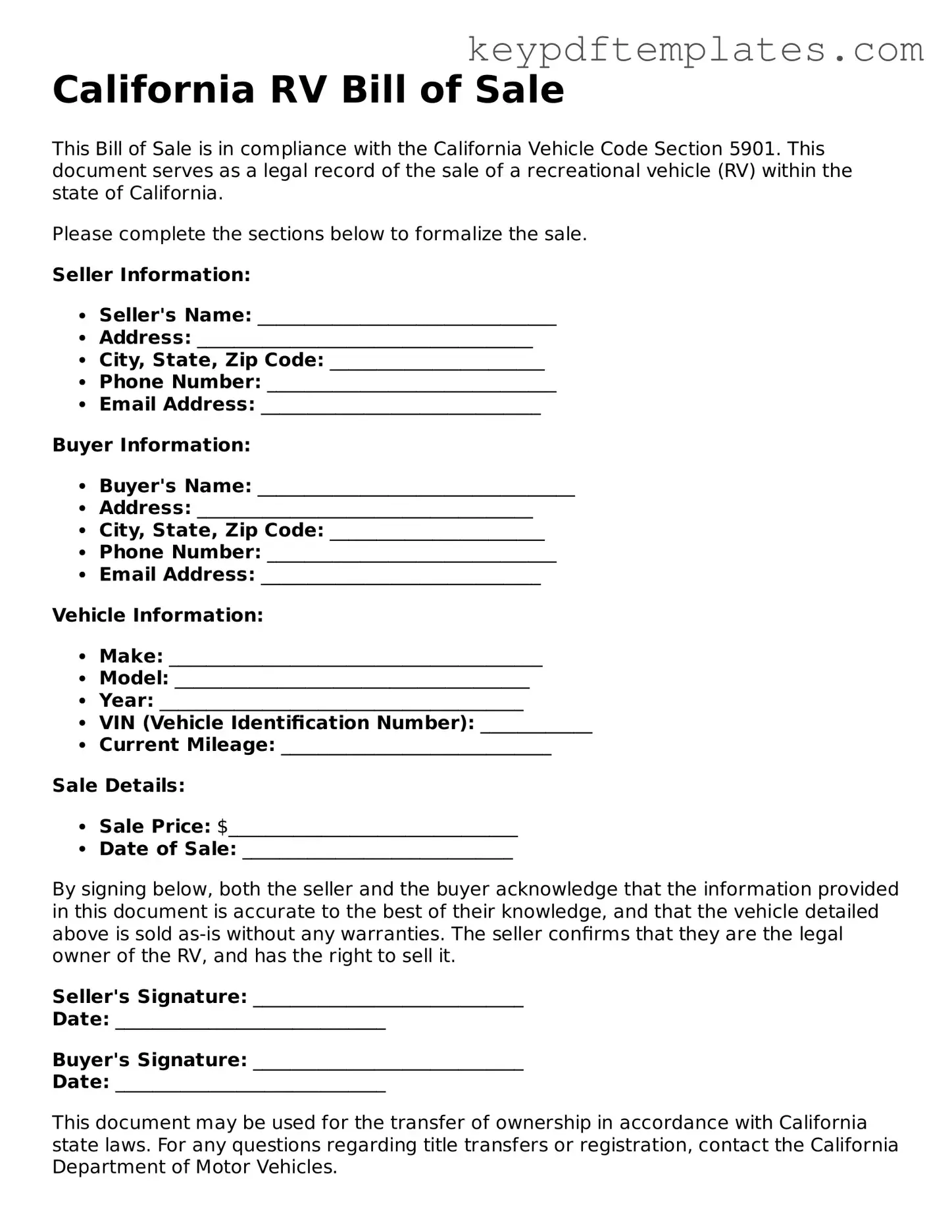Legal RV Bill of Sale Document for the State of California
The California RV Bill of Sale form is a legal document used to transfer ownership of a recreational vehicle from one party to another. This form provides essential details about the transaction, including the buyer's and seller's information, vehicle specifics, and sale price. Proper completion of this form helps ensure a smooth transfer and protects the rights of both parties involved.
Modify Document Online
